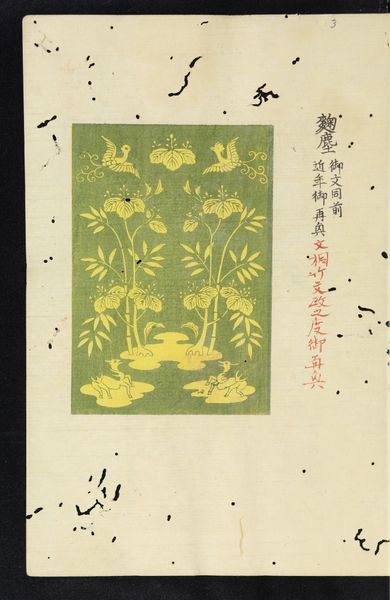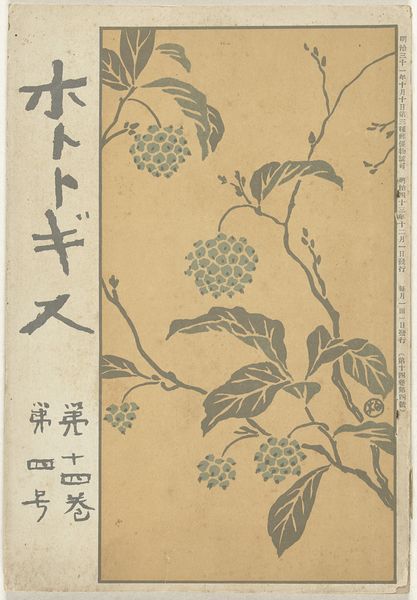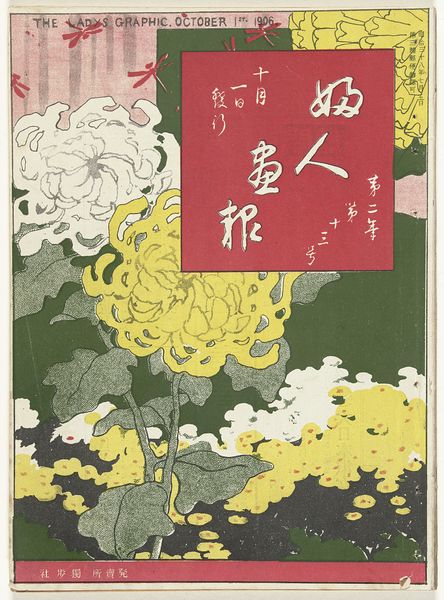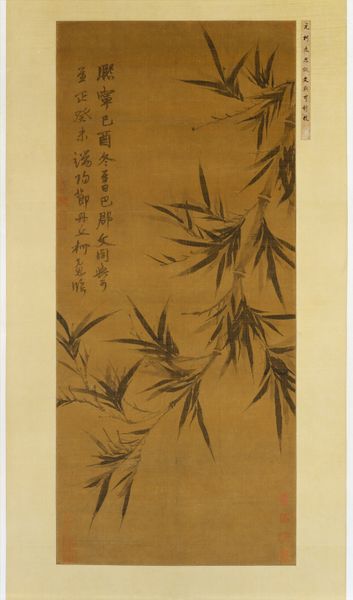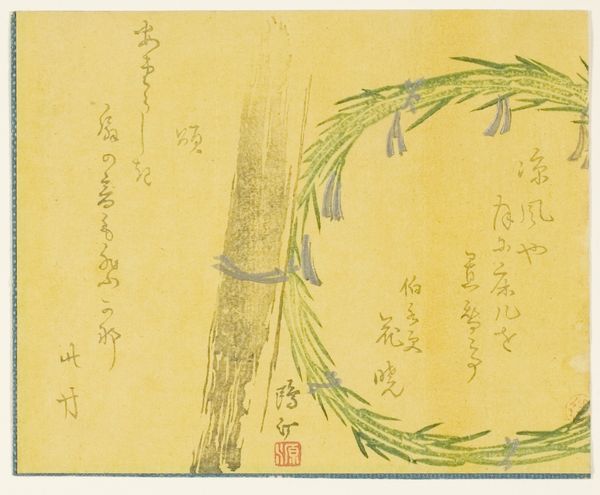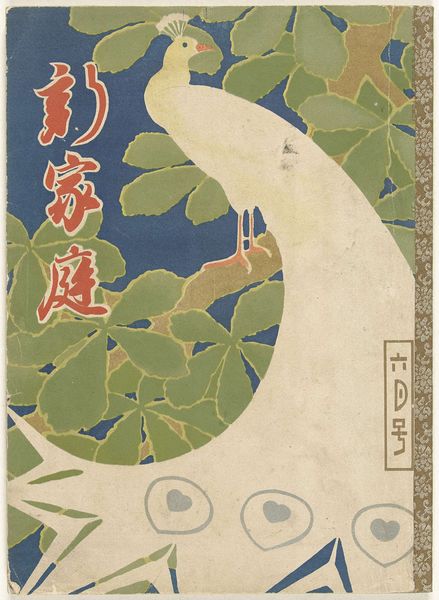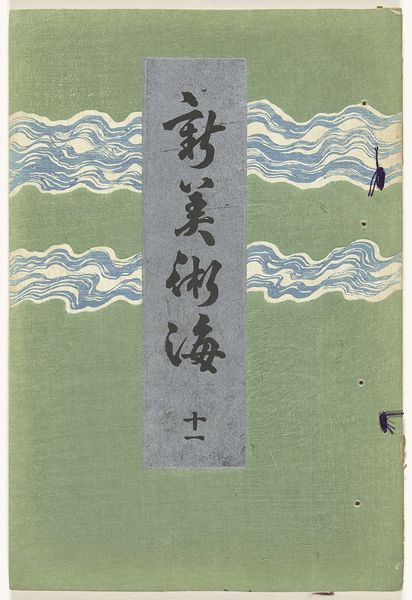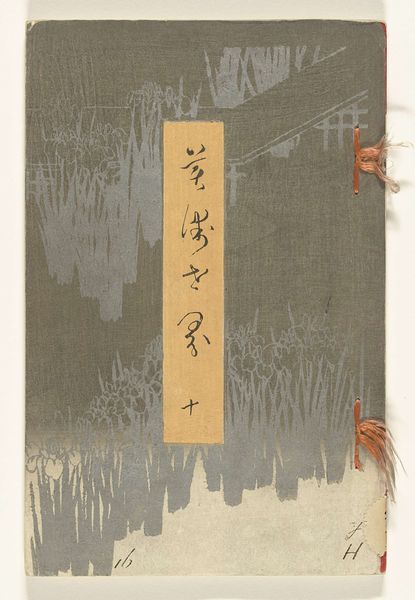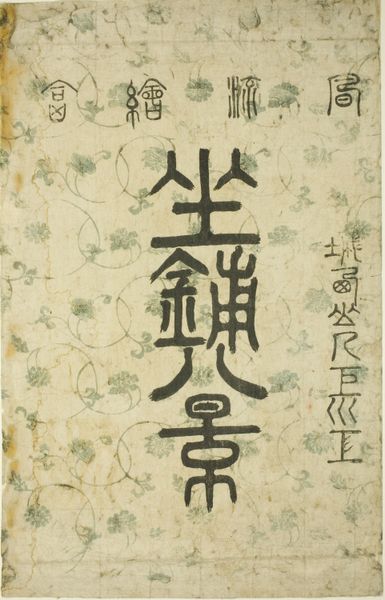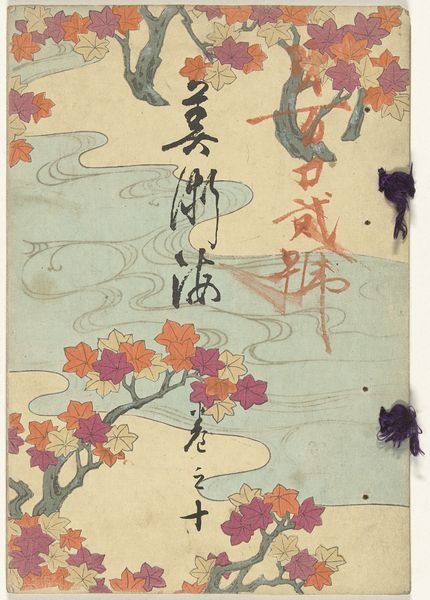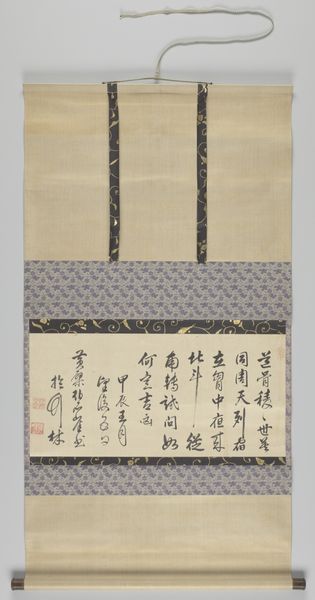
print, typography, woodblock-print
# print
#
asian-art
#
landscape
#
typography
#
woodblock-print
#
organic pattern
Dimensions: height 251 mm, width 183 mm
Copyright: Rijks Museum: Open Domain
Curator: This captivating piece is titled "Mei 1909," attributed to Ishikawa Toraji, possibly around 1907. It's currently held in the Rijksmuseum, and demonstrates the influence of Japonisme with its presentation of cascading wisteria. What are your initial impressions? Editor: Visually, the chromatic organization is very appealing. I immediately notice the interplay between the rigid vertical band of crimson against the organic patterns of green, yellow, and periwinkle. The textures feel flat, and immediate. What was the material process? Curator: It's a woodblock print, showcasing an engagement with both the organic world and the decorative arts. I would emphasize that through his sophisticated manipulation of line and color, Toraji constructs an intriguing spatial composition. Editor: Precisely, and I'd like to understand more about this production method. Each color requires a separate block, each painstakingly carved. We can examine the material process to consider its socio-economic conditions; the division of labor within workshops and the sourcing of materials—the very materiality embeds specific labor conditions. Curator: While the material creation informs, consider the art historical references: Japonisme filtered through a unique lens. The arrangement and color relationships establish an emotive connection, an echoing rhythm inherent to both subject and surface. Semiotically, we can observe how the arrangement alludes to temporality as well. Editor: Yes, it hints at that relationship but consider also the availability of wood, the pigments, and the skills that create this printed page. It begs the question, who has access, and where does its cultural impact reside in its availability, production and consumption? Curator: Those considerations do offer another lens. But ultimately, one must return to the inherent structural aspects. It’s an elegantly simple expression infused with nuance. The very visible registration of colors, that overlapping, grants it texture. Editor: Ultimately, considering those visible registrations we can consider them intentional or incidental but that can indicate specific labor inputs; that's a productive point to investigate. We are left to see that despite the beauty on its face, we still see production and distribution decisions with clear and very human means and ends. Curator: Indeed. “Mei 1909” speaks of a singular artistic sensibility engaging in dialogue across time.
Comments
No comments
Be the first to comment and join the conversation on the ultimate creative platform.
